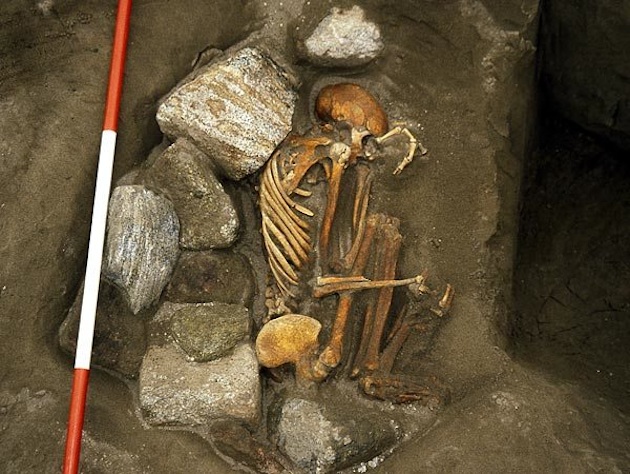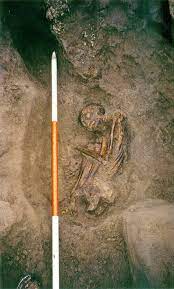Close examination of two remains (a male and a female) led to an astonishing discovery.
According to Archeology, thanks to statistics, scientists found that intentional mummies (ie dead bodies were carefully embalmed and buried by living people instead of just accidentally). become mummies due to weather conditions combined with burial factors) are rarely found in Europe.
However, in 2001, that “rare occurrence” appeared at Cladh Hallan, a Bronze Age settlement on the island of South Uist in Scotland’s Outer Hebrides. Here, archaeologists found two sets of remains estimated to be 3,000 years old beneath the brick foundation of an ancient house.
What surprised scientists was that the buried position of these two mummies was strangely contorted, looking like the position of a fetus in the womb.

Image of the mummy when it was found.
Research shows that these two mummies were intentionally preserved by ancient people for a long time (about 100 years) by dropping them into nearby peat bogs. Immersing a dead body in a place with low oxygen levels and rich in acid, such as a swamp, will cause bacteria to prevent the body from decomposing completely.
Experts at the University of Manchester determined that these two mummies had been soaked in the swamp for many years before being taken out for normal burial procedures in the tomb below the old house.
Archaeologist Mike Parker Pearson of University College London said: “The process of mummification was common in many parts of the world in the past, but this is the first time we have seen clear evidence that mummification was practiced. made during the Bronze Age in the British Isles”.

However, when “digging” the research further, scientists discovered a more surprising secret.
Close examination of the two remains (a male and a female) led to another astonishing discovery. The skeleton looks intact but is actually “patched together” from many different people.
Specifically, the male skeleton is essentially a “composite skeleton”. That is, the torso, skull, neck and lower jaw belong to 3 different men.

It turns out that this is not the skeleton of one person but of three people pieced together.
And DNA tests also proved that the woman’s skeleton was also a “composite” formed from a man’s skull, a woman’s torso and the arm of a third person whose gender was still unknown. . In addition, carbon dating shows that the female mummy’s skull may be 50 to 200 years older than her body.
Archaeologists have yet to agree on why these remains were carefully embalmed and then “mixed” together.
“Mixing of remains can be done to combine different ancestors or families into a single lineage,” Parker Pearson explains .
Besides, there is also a theory that the assembly of body parts into two people is because the dead person does not have all four limbs, the missing limbs are added for replacement purposes. Most likely, these two mummies were used for some ritual purpose. To date, issues related to these two monstrous mummies are still mysteries waiting to be answered by science.





